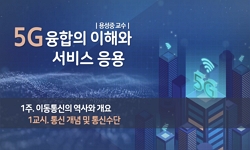<P><B>Abstract</B></P> <P>The upcoming 5G era emphasizes on a dramatic increase in the transmission rate of smartphone traffic. With more users operating at high rates, the type of data shared over the network is going t...
http://chineseinput.net/에서 pinyin(병음)방식으로 중국어를 변환할 수 있습니다.
변환된 중국어를 복사하여 사용하시면 됩니다.
- 中文 을 입력하시려면 zhongwen을 입력하시고 space를누르시면됩니다.
- 北京 을 입력하시려면 beijing을 입력하시고 space를 누르시면 됩니다.
https://www.riss.kr/link?id=A107475045
- 저자
- 발행기관
- 학술지명
- 권호사항
-
발행연도
2018
-
작성언어
-
- 주제어
-
등재정보
SCOPUS,SCIE
-
자료형태
학술저널
-
수록면
120-139(20쪽)
- 제공처
-
0
상세조회 -
0
다운로드
부가정보
다국어 초록 (Multilingual Abstract)
<P><B>Abstract</B></P> <P>The upcoming 5G era emphasizes on a dramatic increase in the transmission rate of smartphone traffic. With more users operating at high rates, the type of data shared over the network is going to be complex and a majority of it will include video traffic. Such complex structure of traffic and heavy load over the components of the network are difficult to control. Further, the mobility of users adds up to this issue and makes it difficult to manage and operate the network without any breakdown. Thus, it important to control traffic as well as manage the mobility of users to provide efficient communication, which can support video traffic at high delivery rates. This paper proposes a novel resource-based mobility management approach for 5G networks comprising video users. A novel resource sharing paradigm, termed as “Catalytic Computing”, provides efficient management of user mobility as well as network resources. The proposed approach relies on Homogeneous discrete Markov model for user mobility patterns and a novel n-step algorithm for congestion prediction and selection of optimal routes between the serving terminals. An activation energy based handover mechanism is also presented in this paper, which reduces the handover latency in comparison with the existing solutions. The evaluation presented in the paper suggests that the proposed approach provides a minimum of 5.9 ms, maximum of 9.1 ms and an average of 6.5 ms latency during handoffs.</P>
동일학술지(권/호) 다른 논문
-
Video multicast cooperative communication in 5G systems with radio frequency energy harvesting
- Elsevier
- Ashraf, Mateen
- 2018
- SCOPUS,SCIE
-
Traffic management in the mobile edge cloud to improve the quality of experience of mobile video
- Elsevier
- Kim, Seokhoon
- 2018
- SCOPUS,SCIE






 ScienceON
ScienceON






